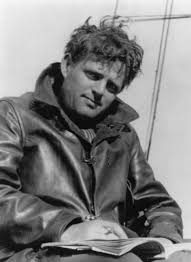Damon Runyon
Sioux City Journal/May 12, 1912
Recognized as One of Greatest Pitching Assets.
Old Prejudice Overcome
American League Twirlers Excel in Use of Damp Sling—Marty O’Toole, Ed Walsh and “Buck” O’Brien the Chief Exponents
Another generation of spitball pitchers has suddenly arisen in the big leagues to take the place of any who have gone or may be going. The fresh crop looks as formidable as the old, and new reputations are likely to be made on the strength of the damp sling in 1912.
Some managers are not particularly partial to the spitballers, but they are willing to have a good one around if they can get him. The talk of legislation against the delivery has practically died out, and it has long since come to be recognized as an institution in the games. They are developing spitballers now, just as they develop curve ball pitchers.
Manager John J. McGraw, of the Giants, is one of the successful club leaders who is supposed to be rather opposed to the wet delivery, and yet he went to further lengths with a spitball tosser than he ever did with any other man, simply because he recognized his greatness as a pitcher and his value in winning games for the New York club. This was “Bugs” Raymond, the erratic Chicagoan, whom McGraw declares has the greatest natural pitching grace of any heaver he has ever seen. Raymond relied almost entirely on the spitter.
With his ability, Raymond should have achieved the fame and fortune of any pitcher ever in the game and his ability consisted of a superb mastery of the spitter.
Spitter Made Tesreau
McGraw now has another spitball pitcher and a star in Charles M. Tesreau, the giant who is ranked with Mathewson and Marquard.
He was signed by McGraw when he was with Shreveport, in the Texas league, largely on his size. Then he was turned over to Toronto, in the International league. He was apparently unable to get any “stuff” on his fast ball, and he had no curve when McGraw first took hold of him, but he commenced picking up the spitball delivery and McGraw encouraged him in that, as he saw little hope for him with the other slants. Today Tesreau has developed a splendid spitter.
“Buck” O’Brien, the Boston Red Sox pitcher, who promises to be a sensation, uses the spitball freely, although it is said that half the time he merely bluffs at it, masking his mouth with his glove before he pitches, as a matter of habit more than anything else.
Connie Mack recognizes the value of the spitball by hanging onto “Cy” Morgan. Claude Hendrix, a Pittsburgh youngster, is regarded in New York as one of the coming stars of the game, and he uses a spitter. Before he acquired that delivery, however, he was not considered of big league class.
Marty O’Toole, the $22,500 beauty purchased by Pittsburgh last season, is a spitball heaver. His value, for some time a little problematical on account of his bad arm, is no longer in doubt in the minds of Pittsburgh fans. They consider him a world beater.
Yankees’ Corner on Twirlers.
The New York Yankees have a corner on spitball pitchers, carrying more than any other club in the big leagues. They have Russell Ford—one of the greatest of them all—George McConnell, Ray Fisher and Jack Quinn. They are accounted above the average. Ford’s mastery of the spitball is nothing short of uncanny, and only Ed Walsh, the daddy of them all, has anything on the Yankees when it comes to making the queer delivery perform.
Nearly every club in the two major leagues has one or more spitball pitchers, but there are more in the American than in the National. This is just a matter of chance, of course. AIso the most ordinary spitball pitcher of the American may be said to outrank the best in the National in some respects, unless some of the newcomers in the older organization should prove to be stars.
Frank Smith, now of Cincinnati, the old Chicago White Sox star, and Harry McIntire, of the Chicago Cubs, are masters of the delivery, but they are hardly the pitchers they were a few years ago.
Joe Lake, of the St. Louis Browns, in the American league, is a good spitball pitcher—probably better than any in the National, and half a dozen others in the younger organization could be named who outclass their fellow spitters of the other league. There seems to be no reason for this except that the old organization does not have the luck in picking up the spitters that the other has.
The old argument that the spitball shortens a pitcher’s career in baseball is still advanced, but the long service of Ed Walsh shows that there may at least be exceptions to the rule. It is a question whether the spitballers who have come and quickly gone would have lasted any longer if they stuck to the old styles.
Elmer Stricklett, who is given credit for the discovery of the spitball, is working for the Binghamton, N. Y., club, after years in the outlaws of California, and it is said that Stricklett can still pitch the damp delivery with considerable effectiveness.
A trio of youngsters like Tesreau, O’Brien and Hendrix would satisfy the most exacting magnate, no matter what sort of delivery they employed, to say nothing of Marty O’Toole, lame arm and all.
